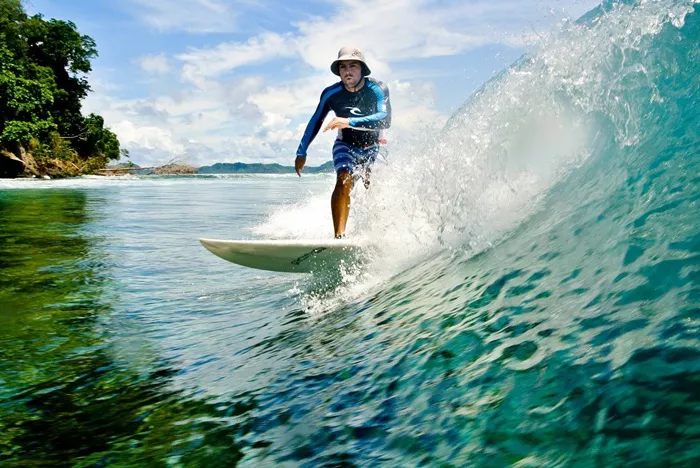The global surfing apparel and accessories market is set for substantial growth over the coming years, driven by rising participation in surfing as both a sport and lifestyle, according to a new report from Persistence Market Research.
Valued at approximately USD 9.5 billion in 2024, the market is projected to expand to USD 14.1 billion by 2031, registering a compound annual growth rate (CAGR) of 5.5%. This surge is fueled by increasing popularity of surfing worldwide, a growing number of surf schools and artificial surf parks, and the mainstream adoption of surf-inspired fashion beyond the beach.
Surf Apparel Leads Market Share
Surf apparel dominates the market, accounting for more than 75% of total sales. Products such as wetsuits, boardshorts, rash guards, and surf tees serve both functional and casual purposes, making them popular with consumers. Accessories like surfboard leashes and fins also contribute significantly, especially among performance-focused surfers.
North America Maintains Market Leadership
Regionally, North America holds a leading 39.4% share of the global market as of 2022. The United States is a key contributor, benefiting from an established surfing culture, a wide presence of major brands—including O’Neill, Roxy, and Hurley—and advanced retail infrastructure. The rise of artificial surf parks and increased water sports participation continue to propel growth in the region.
Meanwhile, the Asia-Pacific region is emerging as a high-growth area, supported by growing surf tourism, government initiatives promoting water sports, and a youthful, fashion-conscious population in countries such as Australia, Indonesia, and Japan.
Retail Landscape and Consumer Trends
Offline retail remains the primary distribution channel, accounting for nearly 79.3% of sales in 2023. Physical stores provide consumers with hands-on experience, allowing them to assess product fit and quality. Leading retailers such as Walmart, Decathlon, and SPAR bolster this dominance by offering extensive product ranges.
Emerging trends show a strong consumer preference for eco-conscious and sustainable surfwear, with brands increasingly integrating organic and recycled materials into their collections. Additionally, technological advancements in textile engineering are enhancing product performance with improvements in flexibility, UV protection, and durability.
Challenges and Opportunities
The market faces challenges including supply chain disruptions linked to geopolitical tensions and pandemic aftereffects, as well as competition from alternative water sports such as stand-up paddleboarding and kitesurfing. Economic volatility, including inflation and currency fluctuations, may also influence consumer spending patterns.
Conversely, opportunities abound in e-commerce expansion, enabling brands to reach global consumers directly, supported by innovations like virtual try-ons and improved delivery logistics. The development of artificial surf pools in inland regions is also broadening access to surfing, creating demand for entry-level and casual surfwear.
Industry Outlook
Leading companies shaping the market include Billabong, Hurley, O’Neill, RVCA, Volcom, Globe International, Reef, Roxy, Curl Ltd., and Quiksilver.
As surfing continues to gain cultural traction and consumers seek products that combine style, performance, and sustainability, the surfing apparel and accessories market is poised for robust growth. Brands that effectively blend innovation with omni-channel retail strategies and respond to evolving consumer lifestyles are expected to capitalize on this dynamic opportunity.

